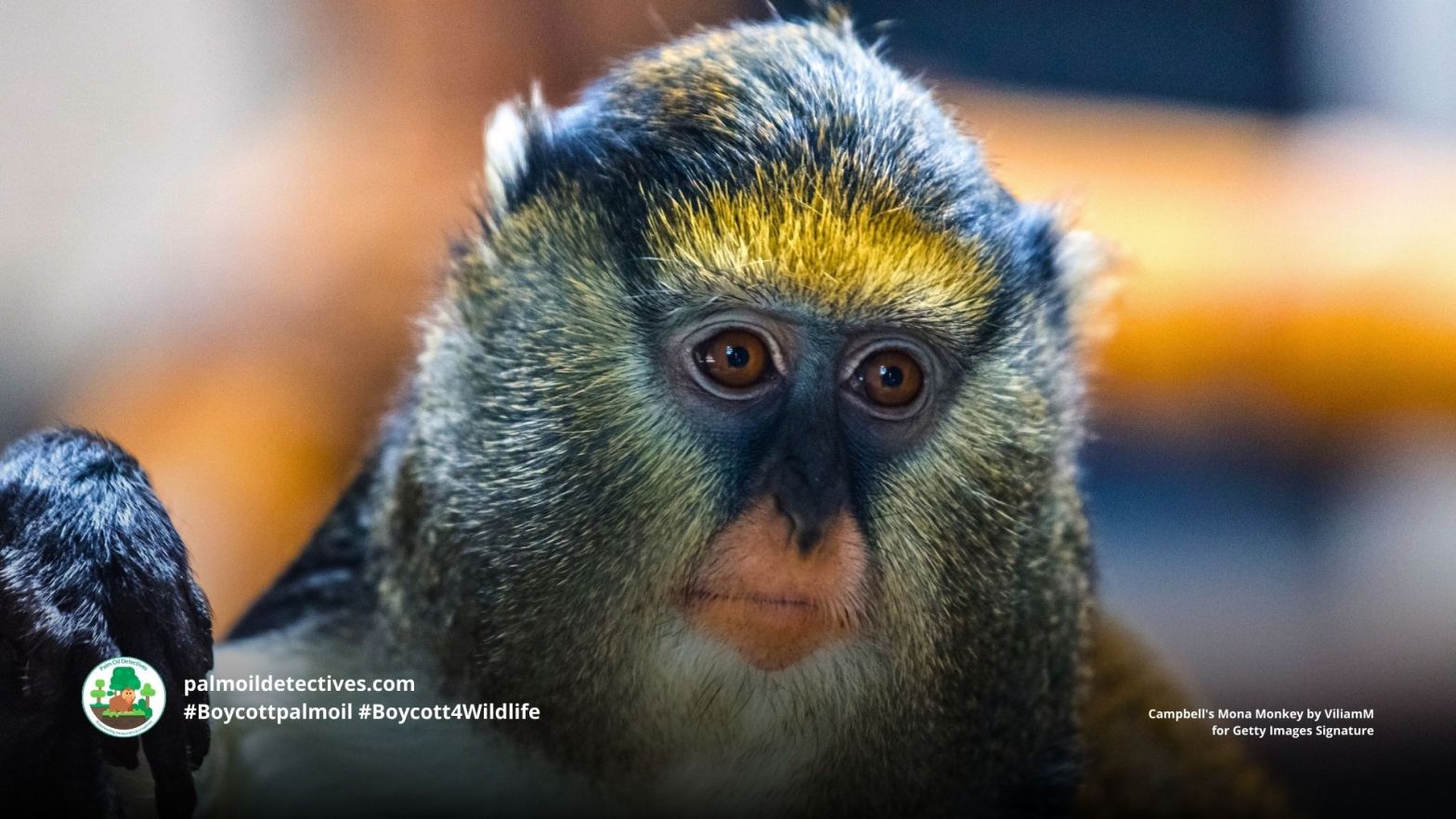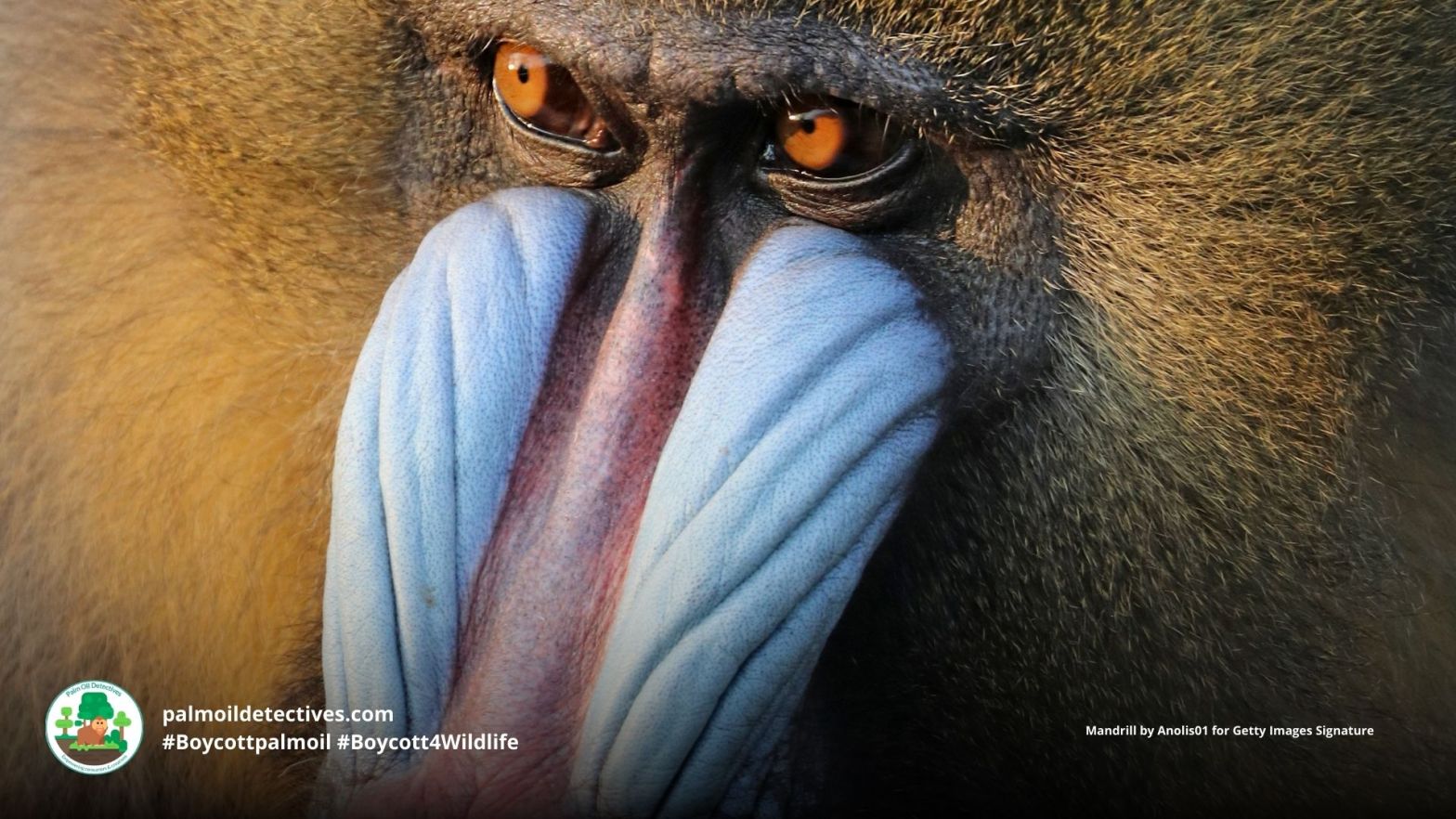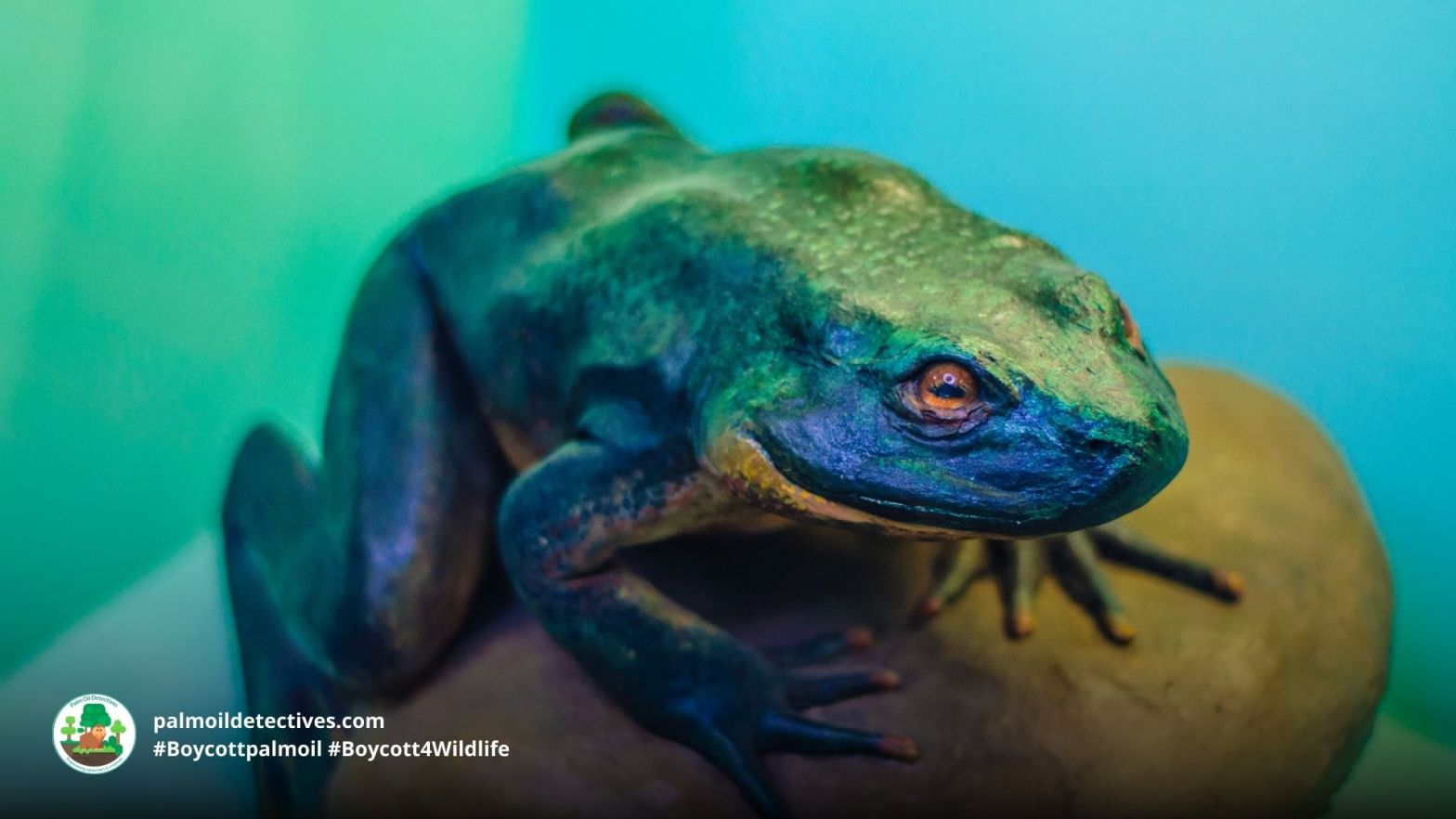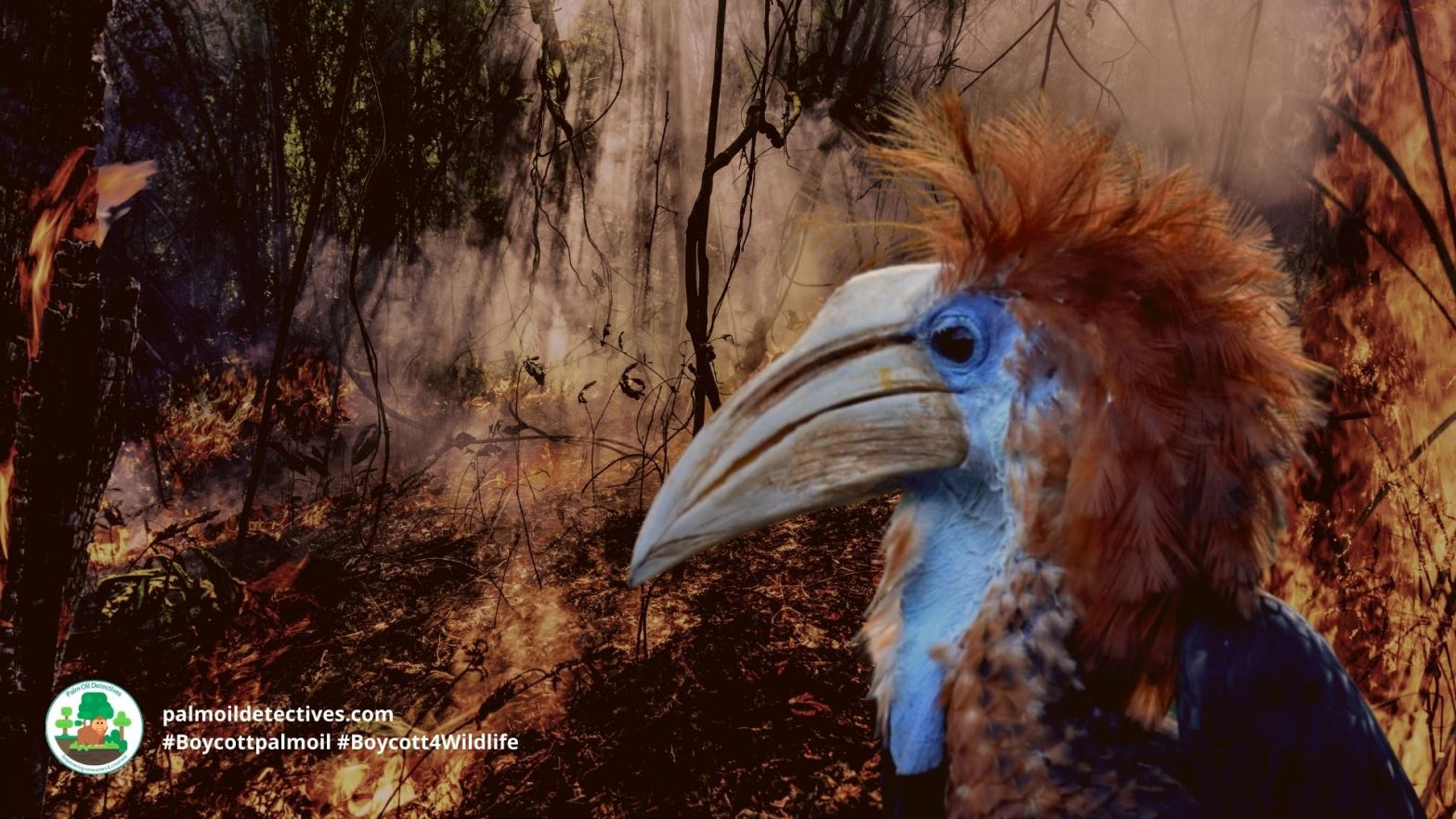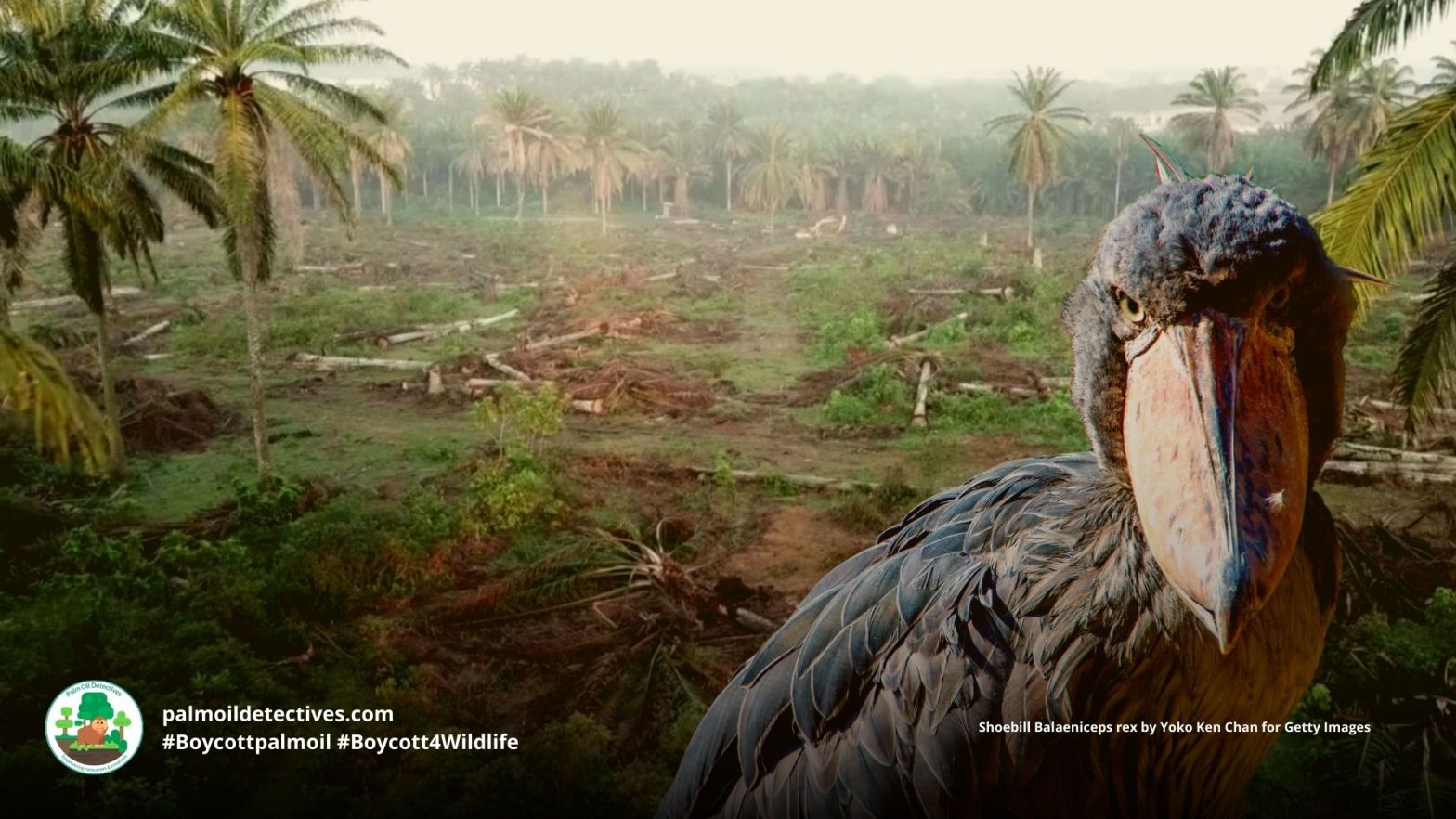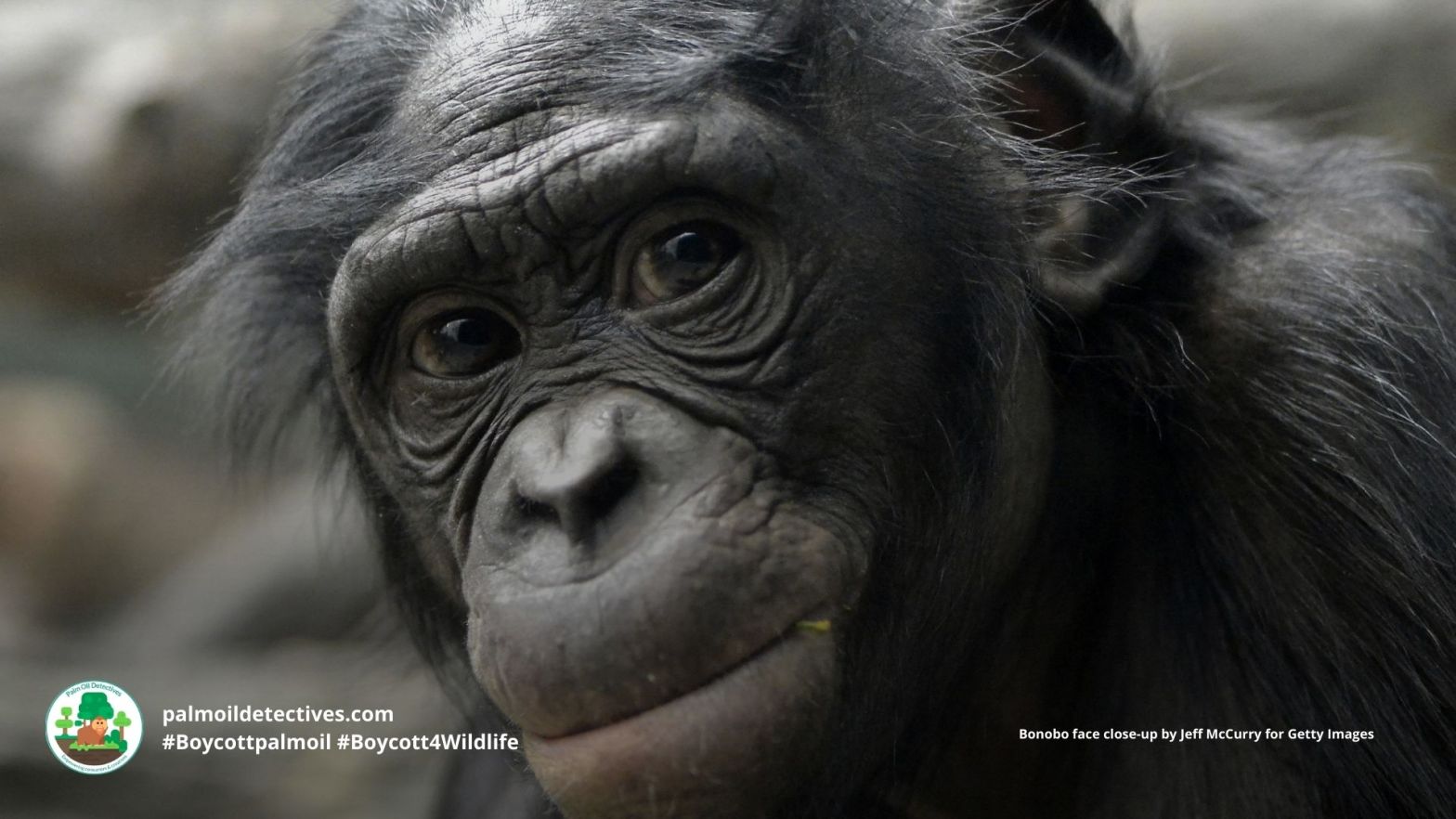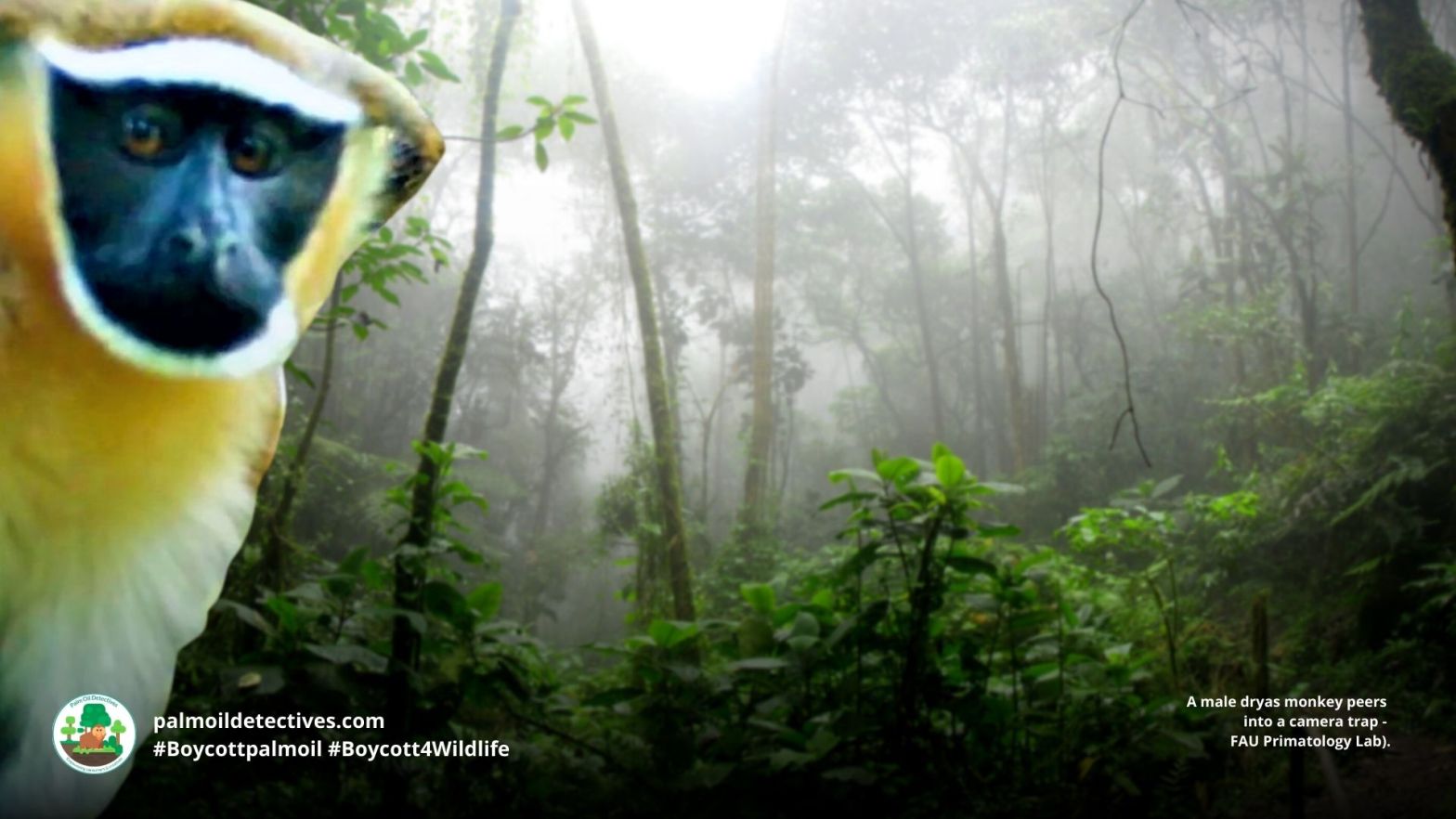Inquisitive and highly social Campbell’s Mona Monkeys are known for their intense hazel eyes and bright yellow brows. They use their large puffy cheeks to store food while they climb to the top of tree canopies to eat it. Males will engage in a dawn and dusk symphony of calling along with other species in a coordinated ritual. They are Near Threatened due to hunting and extensive forest loss throughout their range in West Africa for palm oil, coffee, cocoa and mining. Help them every time you shop by using your wallet as a weapon – #Boycottpalmoil #Boycott4Wildlife
Tag Archives: Africa
Mandrill Mandrillus sphinx
Magnificent #mandrills are undoubtedly one of the world’s most photogenic monkeys – famous for their brightly coloured and expressive appearance. Their bright blue rumps and vivid red, yellow and pink faces become even more deeply colourful when they’re excited. Males use their extra long canines for self-defence, but exposing their teeth can also be a sign of friendliness. Mandrills are important seed dispersers and a critical part of keeping the ecosystem in balance. These beautiful monkeys are vulnerable from palm oil, meat and cocoa deforestation and intensive poaching. Help their survival and #Boycottpalmoil #Boycott4Wildlife
Goliath Frog Conraua goliath
Goliath Frogs are the largest frog in the world and can grow as large as a domestic cat. These muscle-bound #amphibians lift heavy rocks to build nests and protect their young. They face extinction from #palmoil #deforestation.
Their nesting and reproduction is hugely dependent upon access to clean, fast-flowing rivers – for this reason the encroachment of industrial scale palm oil, cocoa and timber deforestation and p0llution of rivers is a direct threat to the existence of the goliath frog. Help them every time you shop in the supermarket and #Boycottpalmoil #Boycott4Wildlife
Yellow-casqued Hornbill Ceratogymna elata
The yellow-casqued hornbill is one of the largest birds in the rainforests of West Africa weighing up to two kilos. They prefer to live high up in the rainforest canopy in Côte d’Ivoire, Ghana, Liberia, Mali and Sierra Leone. Their main threat is hunting and human persecution and they are possibly extinction now in some countries. Recent mass deforestation for mining, palm oil, cocoa and meat is also a threat and they are now vulnerable. Help them every time you shop and be #vegan, #Boycottpalmoil, #Boycott4Wildlife
Shoebill Balaeniceps rex
Known for their unnerving and intense stare and imposing, prehistoric appearance – shoebills are magnificent birds. There are less than 8000 individual birds left alive. They are vulnerable from palm oil, cocoa and meat deforestation, agricultural run-off, mining, hunting and human persecution. Help them every time you shop and be #vegan, #Boycottpalmoil #Boycott4Wildlife
Bonobo Pan paniscus
Bonobos share 98% of their DNA with humans and are one of our closest extant relatives. They are complex beings with intricate social relationships, they demonstrate profound intelligence and emotional sensitivity.
It is therefore fitting that 14th of February, Valentine’s Day is also the International Day to celebrate Bonobos – Bonobos provide a potent example to humans for how we can resolve conflicts through love and non-violent conflict resolution. They are endangered in DRC/Congo from infectious diseases, illegal poaching and deforestation for palm oil, cocoa and meat and mining throughout their home range. Help their survival every time you shop – be vegan and #Boycottpalmoil #Boycott4Wildlife.
Africa is becoming the new frontier for oil-palm plantations, which offers excellent economic prospects in countries with appropriate rainfall, soil and temperature conditions (Rival and Levang 2014). A staggering 99.2% of the Bonobo’s range is suitable for oil palm (Wich et al. 2014), highlighting the enormous risk the palm-oil industry will pose unless sustainable management plans are developed and implemented to protect great apes and their habitats (IUCN SSC Primate Specialist Group 2014).
Dryas Monkey Chlorocebus dryas
Dryas Monkeys are secretive and vividly colourful monkeys who hang on to survival in the forests of the Congo. There is estimated to only be 100-250 individual monkeys still alive. They are fruit-eaters and play a critical role in ensuring the dispersion of seeds and therefore the future health of the DRC’s rainforests. They are preyed upon by leopards in the Congo basin. However, the main threat they face is the illegal poaching and hunting by humans for bushmeat, along with deforestation for palm oil, mining and other commodities.
Protect them each time you shop by boycotting meat and palm oil in the supermarket. #Boycott4Wildlife
RSPO member SIAT leaves Nigerian farmers without food. Leases their illegally taken land for €1.23 Euros per hectare, per year
A 5-month investigation by Elfredah Kevin-Alerechi and Kevin Woke of Sahara Reporters reveals how RSPO member SIAT Nigeria Limited is involved in human rights abuses and land-grabbing on host communities’ lands. Journalists Elfredah Kevin-Alerechi and Kevin Woke also discovered that palm oil company SIAT who illegally took their land are leasing it for a mere 600 Naira (N600) per hectare annually – the equivalent of €1.23 Euros per year to lease it.
River pollution by pesticides and restriction by the company to land, where locals can grow food has meant that their food and water supply is contaminated – starvation is now an urgent problem.
All of this occurs under the guise of “sustainable” palm oil pushed by the RSPO to consumers. SIAT’s palm oil is used in consumer products by PZ Cussons (source), Nestle (source) and Danone (source). This is wh you should #Boycottpalmoil
Story via Sahara Reporters. Additional info: Chain Reaction Research
Butterfly Viper Bitis nasicornis
Although they possess one of the most potent venoms of all snakes in Africa, Butterfly Vipers are surprisingly placid and won’t attack unless provoked or threatened. They are known by several common names: Rhinoceros viper, River Jack, the Rhinoceros horned viper and the Horned puff adder. They are appreciated for their vividly coloured markings that keep them camouflaged on the forest floor.
September 21st: International Day of Struggle Against Monoculture Plantations
Today is ‘International Day of Struggle Against Monoculture Tree Plantations. World Rainforest Movement have produced a powerful video to highlight the Ugandan people’s struggle against BIDCO an international company partly owned by global palm oil giant Wilmar, who are taking land by force from locals by making false promises and using coercion and violence. They do so under the greenwashing protection of the RSPO
Chimpanzees once helped African rainforests recover from a major collapse
Most people probably think that the rainforest of central and west Africa, the second largest in the world, has been around for millions of years. However recent research suggests that it is mostly just 2,000 or so years old. The forest reached roughly its modern state following five centuries of regeneration after it was massively fragmented when the dry season suddenly became longer some 2,500 years ago. Help #chimpanzees to survive and #Boycottpalmoil #Boycott4Wildlife every time you shop
Hippopotamus Hippopotamus amphibius
Hippopotamus Hippopotamus amphibius Extant (resident) Angola; Benin; Botswana; Burkina Faso; Burundi; Cameroon; Central African Republic; Chad; Congo; Congo, The Democratic Republic of the; Côte d’Ivoire; Equatorial Guinea; Eswatini; Ethiopia; Gabon; Gambia; Ghana; Guinea; Guinea-Bissau; Kenya; Malawi; Mali; Mozambique; Namibia; Niger; Nigeria; Rwanda; Senegal; Sierra Leone; Somalia; South Africa; South Sudan; Sudan; Tanzania, United Republic of;Continue reading “Hippopotamus Hippopotamus amphibius”
The people versus Feronia: Fighting palm oil agrocolonialism in the Congo
This incredible comic was created by Didier Kassai with research by Judith Verweijen and Dieudonne Botoko Kendewa of the University of Sussex and the University of Sheffield. The comic was originally posted by Cartoon Movement. The comic is based on field research conducted around the Feronia palm oil plantation in Tshopo province in north-east DR Congo.Continue reading “The people versus Feronia: Fighting palm oil agrocolonialism in the Congo”
Research: Small room for compromise between oil palm cultivation and primate conservation in Africa
Research by the Joint Research Centre of the European Commission found that although oil palm cultivation represents an important source of income for many tropical countries, its future expansion is a primary threat to tropical forests and biodiversity. In this context, and especially in regions where industrial palm oil production is still emerging, identifying “areasContinue reading “Research: Small room for compromise between oil palm cultivation and primate conservation in Africa”
Contagious yawns show social ties in humans and bonobos
Penny Orbell, The Conversation Most of us have experienced the overwhelming urge to yawn in response to another person yawning – but we’re not the only species to do this. Research published in PeerJ today shows bonobos – our closest evolutionary cousins – also experience “yawn contagion”, and, as in humans, the effect is influencedContinue reading “Contagious yawns show social ties in humans and bonobos”
African Forest Elephant Loxodonta cyclotis
African Forest Elephant Loxodonta cyclotis Critically Endangered Extant (resident): Angola; Benin; Burkina Faso; Cameroon; Central African Republic; Congo; Congo, Côte d’Ivoire; Equatorial Guinea; Gabon; Ghana; Guinea; Guinea-Bissau; Liberia; Niger; Nigeria; Senegal; Sierra Leone; South Sudan; Togo Extinct: Gambia Rapid land use change, including palm oil plantations across their range is driving the direct loss andContinue reading “African Forest Elephant Loxodonta cyclotis”
Temminck’s Pangolin Smutsia temminckii
Temminck’s Pangolin Smutsia temminckii Vulnerable Extant (resident): Angola; Botswana; Burundi; Central African Republic; Chad; Ethiopia; Kenya; Malawi; Mozambique; Namibia; Rwanda; South Africa; South Sudan; Sudan; Tanzania, United Republic of; Uganda; Zambia; Zimbabwe Possibly Extant (resident): Congo Possibly Extinct: Eswatini The Temminck’s pangolin is a secretive, primarily nocturnal, mammal that is covered in overlapping plate-like scales,Continue reading “Temminck’s Pangolin Smutsia temminckii”
Black-Throated monitor Varanus albigularis microstictus
The Black-Throated Monitor is a mighty and large lizard reaching over 2 metres long. They are threatened by agriculture deforestation and #hunting for their leather and meat in Tanzania, Africa. Help them every time you shop and #Boycottpalmoil #Boycott4Wildlife
Western Lowland Gorilla Gorilla gorilla
Mighty, intelligent and gentle Western Lowland Gorillas are well-loved apes, they are #critically endangered by #deforestation and habitat loss for #palmoil, cocoa and mining along with disease and illegal poaching in #Congo #Nigeria #Cameroon Help them to survive every time you shop! Join the #Boycott4Wildlife
Golden Monkey Cercopithecus mitis ssp. kandti
The Democratic Republic of the Congo; Rwanda; Uganda Endangered Golden Monkey Cercopithecus mitis ssp. kandti The Golden monkey Cercopithecus kandti are Old World monkeys that live nestled deeply into the Virunga volcanic mountains of Central Africa. They are found in four national parks: Mgahinga, in south-west Uganda; Volcanoes, in north-west Rwanda; and Virunga and Kahuzi-Biéga,Continue reading “Golden Monkey Cercopithecus mitis ssp. kandti”

